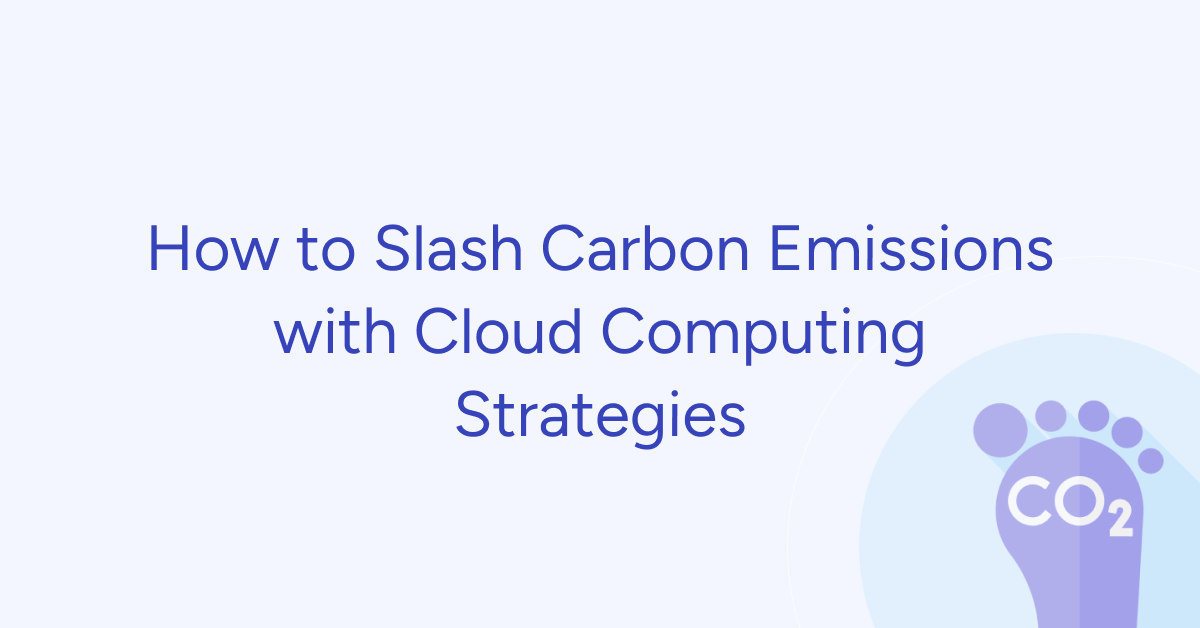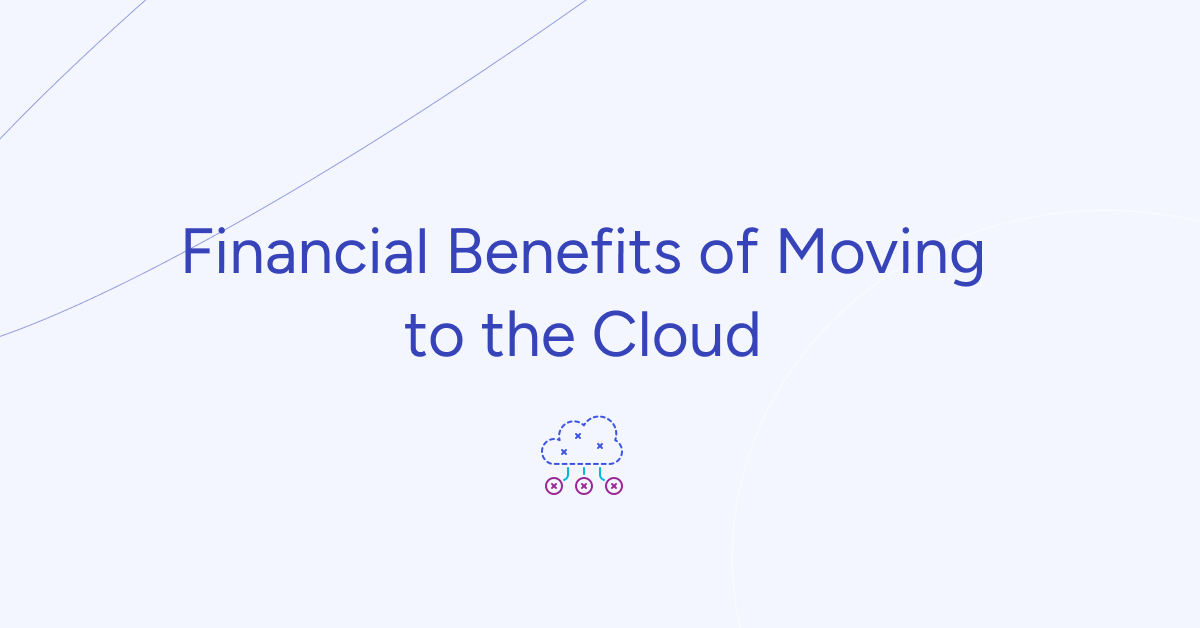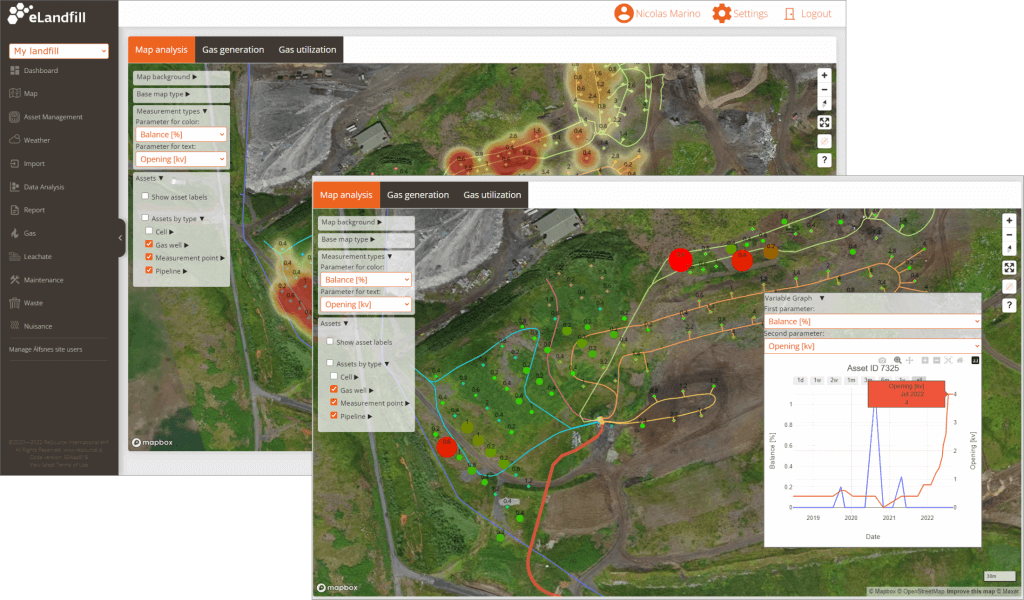
As climate change, resource depletion, and environmental issues loom large, businesses are turning to technology as a powerful ally in achieving their sustainability goals. This isn't just about saving the planet (although that's pretty important), it's also about creating a more efficient and resilient future for all.
Data is the new oil, and when it comes to sustainability, it's a game-changer. Technology empowers businesses to collect and analyze vast amounts of data, allowing them to make informed decisions about their environmental impact. By automating processes, streamlining operations, and enabling data-driven decision-making, businesses can minimize waste, reduce energy consumption, and optimize resource utilization.
Digital technologies, such as cloud computing, remote collaboration tools, and virtual platforms, have the potential to reduce the need for physical infrastructure and travel, thereby minimizing the associated environmental impacts.
One of the primary challenges is striking a balance between sustainability goals and profitability. Many businesses struggle to reconcile the perceived trade-off between environmental considerations and short-term financial gains. Implementing sustainable practices often requires upfront investments in new technologies, infrastructure, or processes, which can be costly and may not yield immediate returns. Convincing stakeholders and shareholders of the long-term benefits and value of sustainability can be a complex task.
The Environmental Impact of IT Infrastructure
One of the primary concerns regarding IT infrastructure is energy consumption. Data centers, which house servers, storage systems, and networking equipment, are energy-intensive facilities. They require substantial amounts of electricity to power and cool the hardware, contributing to greenhouse gas emissions and straining energy grids. According to estimates, data centers account for approximately 1% of global electricity consumption, and this figure is expected to rise as data volumes and computing demands continue to grow.
Furthermore, the manufacturing process of IT equipment, such as servers, computers, and other hardware components, involves the extraction and processing of raw materials, which can have detrimental effects on the environment. The mining of rare earth metals and other minerals used in electronic components can lead to habitat destruction, water pollution, and the depletion of natural resources.
E-waste, or electronic waste, is another pressing issue related to IT infrastructure. As technological devices become obsolete or reach the end of their lifecycle, they often end up in landfills or informal recycling facilities, posing risks to human health and the environment. E-waste can contain hazardous substances like lead, mercury, and cadmium, which can leach into soil and water sources, causing pollution and potential harm to ecosystems.
By addressing the environmental impact of IT infrastructure, businesses can not only reduce their carbon footprint and resource consumption but also contribute to a more sustainable future. Striking a balance between technological innovation and environmental stewardship is crucial for achieving long-term sustainability goals.
DevOps and Sustainability
DevOps practices play a pivotal role in optimizing resources and reducing waste, making them a powerful ally in the pursuit of sustainability. By seamlessly integrating development and operations processes, DevOps enables organizations to achieve greater efficiency, agility, and environmental responsibility.
At the core of DevOps is the principle of automation and continuous improvement. By automating repetitive tasks and streamlining processes, DevOps eliminates manual efforts, reduces human errors, and minimizes resource wastage. This efficiency translates into lower energy consumption, decreased hardware utilization, and a reduced carbon footprint.
CI/CD for Improved Eco-Efficiency
Continuous Integration and Continuous Delivery (CI/CD) are essential DevOps practices that contribute to sustainability. CI/CD enables organizations to rapidly and frequently deliver software updates and improvements, ensuring that applications run optimally and efficiently. This approach minimizes the need for resource-intensive deployments and reduces the overall environmental impact of software development and operations.
Moreover, CI/CD facilitates the early detection and resolution of issues, preventing potential inefficiencies and resource wastage. By integrating automated testing and quality assurance processes, organizations can identify and address performance bottlenecks, security vulnerabilities, and other issues that could lead to increased energy consumption or resource utilization.
Monitoring and Analytics for Identifying and Eliminating Inefficiencies
DevOps emphasizes the importance of monitoring and analytics as a means to gain insights into system performance, resource utilization, and potential areas for improvement. By leveraging advanced monitoring tools and techniques, organizations can gather real-time data on energy consumption, hardware utilization, and application performance.
This data can then be analyzed to identify inefficiencies, such as underutilized resources, redundant processes, or areas where optimization is required. Armed with these insights, organizations can take proactive measures to streamline operations, adjust resource allocation, and implement energy-saving strategies, ultimately reducing their environmental footprint.
For a deeper dive into how monitoring and analytics can drive efficiency and sustainability, explore this case study of a software development company that optimized its workload orchestration using continuous monitoring.
Our case study: Implementation of Nomad Cluster for Massively Parallel Computing
Cloud Computing and Sustainability
Cloud computing has emerged as a transformative technology that not only enhances efficiency and agility but also holds significant potential for promoting sustainability and reducing environmental impact. By leveraging the power of cloud services, organizations can achieve remarkable energy and resource savings, while simultaneously minimizing their carbon footprint.
Energy and Resource Savings through Cloud Services
One of the primary advantages of cloud computing in terms of sustainability is the efficient utilization of shared resources. Cloud service providers operate large-scale data centers that are designed for optimal resource allocation and energy efficiency. By consolidating workloads and leveraging economies of scale, cloud providers can maximize resource utilization, reducing energy consumption and minimizing waste.
Additionally, cloud providers invest heavily in implementing cutting-edge technologies and best practices for energy efficiency, such as advanced cooling systems, renewable energy sources, and efficient hardware. These efforts result in significant energy savings, translating into a lower carbon footprint for organizations that leverage cloud services.
Flexible Cloud Models for Cost Optimization for Sustainable Operations
Cloud computing offers flexible deployment models, including public, private, and hybrid clouds, allowing organizations to tailor their cloud strategies to meet their specific needs and optimize costs. By embracing the pay-as-you-go model of public clouds or implementing private clouds for sensitive workloads, businesses can dynamically scale their resource consumption, avoiding over-provisioning and minimizing unnecessary energy expenditure.
Cloud providers offer a diverse range of compute and storage resources with varying payment options and tiers, catering to different use cases and requirements. For instance, Amazon Web Services (AWS) provides Elastic Compute Cloud (EC2) instances with multiple pricing models, including Dedicated, On-Demand, Spot, and Reserved instances. Choosing the most suitable instance type for a specific workload can lead to significant cost savings.
Dedicated instances, while the most expensive option, are ideal for handling sensitive workloads where security and compliance are of paramount importance. These instances run on hardware dedicated solely to a single customer, ensuring heightened isolation and control.
On-demand instances, on the other hand, are billed on an hourly basis and are well-suited for applications with short-term, irregular workloads that cannot be interrupted. They are particularly useful during testing, development, and prototyping phases, offering flexibility and scalability on-demand.
For long-running workloads, Reserved instances offer substantial discounts, up to 72% compared to on-demand pricing. By investing in Reserved instances, businesses can secure capacity reservations and gain confidence in their ability to launch the required number of instances when needed.
Spot instances present a cost-effective alternative for workloads that do not require high availability. These instances leverage spare computing capacity, enabling businesses to benefit from discounts of up to 90% compared to on-demand pricing.
Our case study: Cutting Costs by 81%: Azure Spot VMs Drive Cost Efficiency for Jewelry AI Vision
Additionally, DevOps teams employ various cloud cost optimization practices to further reduce operational expenses and environmental impact. These include:
- Identifying and deleting underutilized instances
- Moving infrequently accessed storage to more cost-effective tiers
- Exploring alternative regions or availability zones with lower pricing
- Leveraging available discounts and pricing models
- Implementing spend monitoring and alert systems to track and control costs proactively
By adopting a strategic approach to resource utilization and cost optimization, businesses can not only achieve sustainable operations but also unlock significant cost savings. This proactive mindset aligns with the principles of environmental stewardship, enabling organizations to thrive while minimizing their ecological footprint.
Read more: Sustainable Solutions with AWS
Reduced Physical Infrastructure and Associated Emissions
Moving to the cloud isn't just about convenience and scalability – it's a game-changer for the environment. Here's why:
Bye-bye Bulky Servers
Cloud computing lets you ditch the on-site server farm. No more rows of whirring machines taking up space and guzzling energy. Cloud providers handle that, often in facilities optimized for efficiency. This translates to less energy used, fewer emissions produced, and a lighter physical footprint for your business.
Commuting? Not Today
Cloud-based tools enable remote work, which means fewer cars on the road spewing out emissions. Not only does this benefit the environment, but it also promotes a more flexible and potentially happier workforce.
Cloud computing offers a win-win for businesses and the planet. By sharing resources, utilizing energy-saving data centers, and adopting flexible deployment models, cloud computing empowers organizations to significantly reduce their environmental impact without sacrificing efficiency or agility. Think of it as a powerful tool for building a more sustainable future, one virtual server at a time.
Get a sample of IT Audit
Sign up now
Get on email
Loading...
Thank you!
You have successfully joined our subscriber list.
Effective Infrastructure Management and Sustainability
Effective infrastructure management plays a crucial role in achieving sustainability goals within an organization. By implementing strategies that optimize resource utilization, reduce energy consumption, and promote environmentally-friendly practices, businesses can significantly diminish their environmental impact while maintaining operational efficiency.
Virtualization and Consolidation Strategies for Reducing Hardware Needs
Virtualization technology has revolutionized the way organizations manage their IT infrastructure.
By ditching the extra servers, you're using less energy to power and cool them. Think of it like turning off all the lights in empty rooms – virtualization ensures you're only using the resources you truly need. This translates to significant energy savings and a smaller carbon footprint.
Fewer servers mean less hardware to manufacture and eventually dispose of. This reduces the environmental impact associated with both the production process and electronic waste (e-waste). Virtualization helps you be a more responsible citizen of the digital world.
Our case study: IoT Device Management Using Kubernetes
Optimizing with Third-Party Services
In the pursuit of sustainability and resource efficiency, businesses must explore innovative strategies that can streamline operations while reducing their environmental footprint. One such approach involves leveraging third-party services to optimize costs and minimize operational overhead. Cloud computing providers, such as Azure, AWS, and Google Cloud, offer a vast array of services that can significantly enhance the development process and reduce resource consumption.
A prime example is Amazon's Relational Database Service (RDS), a fully managed database solution that boasts advanced features like multi-regional setup, automated backups, monitoring, scalability, resilience, and reliability. Building and maintaining such a service in-house would not only be resource-intensive but also costly, both in terms of financial investment and environmental impact.
However, striking the right balance between leveraging third-party services and maintaining control over critical components is crucial. When crafting an infrastructure plan, DevOps teams meticulously analyze project requirements and assess the availability of relevant third-party services. Based on this analysis, recommendations are provided on when it's more efficient to utilize a managed service, and when it's more cost-effective and suitable to build and manage the service internally.
For ongoing projects, DevOps teams conduct comprehensive audits of existing infrastructure resources and services. If opportunities for cost optimization are identified, they propose adjustments or suggest integrating new services, taking into account the associated integration costs with the current setup. This proactive approach ensures that businesses continuously explore avenues for reducing their environmental footprint while maintaining operational efficiency.
One notable success story involves a client whose services were running on EC2 instances via the Elastic Container Service (ECS). After analyzing their usage patterns, peak periods, and management overhead, the DevOps team recommended transitioning to AWS Fargate, a serverless solution that eliminates the need for managing underlying server infrastructure. Fargate not only offered a more streamlined setup process but also facilitated significant cost savings for the client.
By judiciously adopting third-party services, businesses can reduce operational overhead, optimize resource utilization, and ultimately minimize their environmental impact. This approach aligns with the principles of sustainability, enabling organizations to achieve their goals while contributing to a greener future.
Our case study: Deployment of a Node.js and React App to AWS with ECS
Green Code and DevOps Go Hand-in-Hand
At the heart of this sustainable approach lies green code, the practice of developing and deploying software with a focus on minimizing its environmental impact. Green code prioritizes efficient algorithms, optimized data structures, and resource-conscious coding practices.
At its core, Green Code is about designing and implementing software solutions that consume fewer computational resources, such as CPU cycles, memory, and energy. By optimizing code for efficiency, developers can reduce the energy consumption and carbon footprint associated with running applications on servers, desktops, and mobile devices.
Continuous Monitoring and Feedback
DevOps promotes continuous monitoring of applications, providing valuable insights into resource utilization. These insights can be used to identify areas for code optimization, ensuring applications run efficiently and consume less energy.
Infrastructure Automation:
Automating infrastructure provisioning and management through tools like Infrastructure as Code (IaC) helps eliminate unnecessary resources and idle servers. Think of it like switching off the lights in an empty room – automation ensures resources are only used when needed.
Containerization
Containerization technologies like Docker package applications with all their dependencies, allowing them to run efficiently on any system. This reduces the need for multiple servers and lowers overall energy consumption.
Cloud-Native Development
By leveraging cloud platforms, developers can benefit from pre-built, scalable infrastructure with high energy efficiency. Cloud providers are constantly optimizing their data centers for sustainability, so you don't have to shoulder the burden alone.
DevOps practices not only streamline development and deployment processes, but also create a culture of resource awareness and optimization. This, combined with green code principles, paves the way for building applications that are not just powerful, but also environmentally responsible.
How Businesses Are Using DevOps, Cloud, and Green Code to Thrive
Case Study 1: Transforming a Local Landfill Solution into a Global Platform
ReSource International, an Icelandic environmental solutions company, developed elandfill.io, a digital platform for monitoring and managing landfill operations. However, scaling the platform globally posed challenges in managing various components, including geospatial data processing, real-time data analysis, and module integration.
Gart Solutions implemented the RMF, a suite of tools and approaches designed to facilitate the deployment of powerful digital solutions for landfill management globally.
Case Study 3: The #1 Music Promotion Services Cuts Costs with Sustainable AWS Solutions
The #1 Music Promotion Services, a company helping independent artists, faced rising AWS infrastructure costs due to rapid growth. A multi-faceted approach focused on optimization and cost-saving strategies was implemented. This included:
Amazon SNS Optimization: A usage audit identified redundant notifications and opportunities for batching messages, leading to lower usage charges.
EC2 and RDS Cost Management: Right-sizing instances, utilizing reserved instances, and implementing auto-scaling ensured efficient resource utilization.
Storage Optimization: Lifecycle policies and data cleanup practices reduced storage costs.
Traffic and Data Transfer Management: Optimized data transfer routes and cost monitoring with alerts helped manage unexpected spikes.
Results: Monthly AWS costs were slashed by 54%, with significant savings across services like Amazon SNS and EC2/RDS. They also established a framework for sustainable cost management, ensuring long-term efficiency.
Partner with Gart for IT Cost Optimization and Sustainable Business
As businesses strive for sustainability, partnering with the right IT provider is crucial for optimizing costs and minimizing environmental impact. Gart emerges as a trusted partner, offering expertise in cloud computing, DevOps, and sustainable IT solutions.
Gart's cloud proficiency spans on-premise-to-cloud migration, cloud-to-cloud migration, and multi-cloud/hybrid cloud management. Our DevOps services include cloud adoption, CI/CD streamlining, security management, and firewall-as-a-service, enabling process automation and operational efficiencies.
Recognized by IAOP, GSA, Inc. 5000, and Clutch.co, Gart adheres to PCI DSS, ISO 9001, ISO 27001, and GDPR standards, ensuring quality, security, and data protection.
By partnering with Gart, businesses can optimize IT costs, reduce their carbon footprint, and foster a sustainable future. Leverage Gart's expertise to align your IT strategies with environmental goals and unlock the benefits of cost optimization and sustainability.

If you're thinking about moving your operations to the public cloud, you probably know about the benefits like improved agility, better performance, and lower costs. But there's one more important factor to think about: being eco-friendly.
When we look at how much energy global data centers use, it's almost as much as Spain uses in a whole year. Moving towards a green cloud model could make a big difference by reducing global CO2 emissions. This shift could cut total IT emissions by 5.9%, which is like taking 22 million cars off the road.
Why it Matters for Businesses
Carbon footprint refers to the total amount of greenhouse gases, specifically carbon dioxide (CO2) and other carbon compounds, that are released into the atmosphere as a result of human activities. This measurement is usually expressed in equivalent tons of CO2 emitted.
In July 2023, we experienced one of the hottest months in about 120,000 years. This highlights the pressing need to tackle climate change. As consumer habits change in response to these challenges, the demand for eco-friendly products and services is skyrocketing.
The tech industry is heading towards cutting ties with data centers powered by fossil fuels. To stay ahead in the market and maintain the trust of customers and investors, companies must act now to reduce their environmental impact. This can involve making smart choices about their cloud provider or even making significant changes themselves.
The good news is that major cloud providers not only offer solutions for your immediate needs but can also be a great starting point for your journey toward sustainable software development.
Embracing cloud solutions boosts sustainability and brings notable cost savings to organizations. Cloud providers offer scalable and pay-as-you-go models, enabling businesses to optimize resource use and cut operational costs.
The Environmental Impact of Cloud Computing
Energy Consumption and Carbon Emissions
Traditional cloud data centers, composed of extensive server farms, consume vast amounts of electricity. These centers often rely on fossil fuels, exacerbating greenhouse gas emissions. Reports suggest that the energy used by data centers worldwide accounts for approximately 1% of global electricity consumption, with this figure expected to rise.
Cooling Systems: A significant portion of energy usage in these data centers is attributed to cooling systems, which regulate server temperatures.
Carbon Footprint: The reliance on non-renewable energy sources amplifies the environmental toll, contributing significantly to climate change.
Resource Depletion and E-Waste
Beyond energy concerns, the manufacturing and decommissioning of hardware lead to resource depletion and electronic waste (e-waste). An estimated 50 million tons of e-waste are generated globally each year, highlighting the urgency for sustainable lifecycle management of cloud infrastructure.
Water Usage
Data centers also consume substantial amounts of water for cooling, which places stress on local water resources, further exacerbating their environmental footprint.
Why Cloud is More Affordable
Cloud computing transforms the landscape of IT services, moving away from traditional desktop setups to remote data centers. Users can effortlessly access on-demand infrastructure, eliminating the need for on-site installation and maintenance.
Green cloud computing takes this concept a step further by utilizing renewable energy sources, reducing energy consumption, and making a significant dent in the carbon footprint.
Virtualization and containerization, dividing hardware for deploying multiple operating systems, help reduce server needs and energy consumption. AI-based resource scheduling, guided by historical usage data, conserves energy. Infrastructure as a Service (IaaS) optimization, focusing on virtual machines and containers, contributes to eco-conscious IT.
A notable 2020 study revealed an interesting trend: despite a 550% increase in computing output, data center energy consumption only grew by 6%. This underscores the efficiency achieved through sustainable practices in cloud computing.
Ready to embrace the benefits of cloud migration? Contact Gart today, and let us guide you through a seamless transition to the cloud. The time is now to elevate your operations and embrace the future of digital efficiency.
Strategies for Sustainable Cloud Computing
Advanced Cooling Technologies
Innovations such as liquid cooling and precision air conditioning can significantly reduce the energy consumption associated with traditional cooling methods.
Server Virtualization
By enabling multiple virtual servers to run on a single physical machine, server virtualization minimizes hardware requirements, leading to lower energy consumption.
Renewable Energy Integration
Adopting renewable energy sources like solar, wind, and hydropower can dramatically cut down carbon emissions. Companies such as Google and Microsoft have committed to sourcing 100% renewable energy for their data centers, setting a precedent for others in the industry.
Dynamic Resource Allocation
Dynamic resource allocation ensures optimal server utilization by redistributing workloads based on real-time demand, reducing idle energy consumption.
A Closer Look at Each Cloud
In a world where the demand for environmentally-friendly businesses is growing, it's essential to be wary of greenwashing—superficial claims without real actions. When seeking vendors, prioritize those who openly share their sustainability efforts and show tangible results. Analyzing these details safeguards against false promises and ensures genuine steps toward a greener future receive support.
Top cloud service providers—Google, Amazon, and Microsoft—are actively committed to becoming carbon-neutral and transitioning their data centers to fully sustainable hosting by 2030.
The efficiency of public cloud infrastructure surpasses that of on-premises data centers, with a strong focus on adopting green energy sources.
AWS aims for 100% renewable energy by 2025 and net-zero emissions by 2040.
Azure plans to use 100% renewable energy by 2025 and strives to be carbon negative by 2030.
GCP is set to rely on 100% carbon-free energy by 2030.
Choosing these providers aligns with the pursuit of a sustainable and eco-friendly digital landscape.
Don't miss the opportunity to transform your operations. Contact Gart now, and let's initiate your seamless transition to the cloud—where innovation meets sustainability.
Google: Carbon-Free Operations, Water Conservation, and Cloud Sustainability
Google aims to power all its global operations with 100% carbon-free energy around the clock by 2030. They achieved carbon-neutrality in 2007 and have been using renewable energy for their data centers since 2017.
The company invests in technology for carbon removal solutions to offset its emissions. Google also has a goal to replenish 120% of the water consumed in its data centers and facilities.
Public cloud services, like Google's, rely on energy-efficient hyperscale data centers. These centers outperform smaller servers thanks to innovative infrastructure design and advanced cooling tech. Operating in a Google data center reduces electricity needs for IT hardware, leading to higher power usage effectiveness (PUE) compared to typical enterprise data centers.
Google Cloud not only prioritizes sustainability in its operations but also offers the Carbon Footprint tool for customers. This tool allows users to monitor and measure carbon emissions from their cloud applications, covering Scope 1, 2, and 3. It serves as an emissions calculator, aiding companies in reporting their gross carbon footprint and offering best practices for building low-carbon applications in Google Cloud.
Read more: Google Cloud Migration Services
Microsoft: Pioneering Carbon Reduction, Circular Solutions, and Cloud Sustainability
Microsoft aims to cut carbon emissions by over 50% by 2030 and eliminate its historical carbon footprint by 2050. They're shifting to 100% renewable energy for data centers and buildings by 2025, and zero waste is on the agenda by 2030.
Circular Centers repurpose old servers to combat growing e-waste, introduced as part of Microsoft's sustainability strategy since 2020.
Tools like Microsoft Cloud for Sustainability offer real-time insights into carbon emissions, while the Emissions Impact Dashboard for Microsoft 365 calculates cloud workload footprints.
Microsoft's focus areas include lowering energy consumption, green data centers, water management, and waste reduction through responsible sourcing and recycling.
Four key drivers reduce the energy and carbon footprint of the Microsoft Cloud: IT operational efficiency, equipment efficiency, datacenter infrastructure efficiency, and new renewable electricity, targeting 100% by 2025.
Read more: Azure Migration Services
Amazon: Leading the Charge with Net-Zero Commitment and Sustainable Solutions
As a co-founder of The Climate Pledge, Amazon joins 400 global companies committed to achieving net-zero carbon emissions by 2040. Their strategies include reducing material usage, innovating for energy efficiency, and embracing renewable energy solutions.
Amazon, the largest corporate buyer of renewable energy since 2020, leads in sustainable practices to decarbonize its transportation network.
A study by 451 Research found that US enterprises, on average, could cut their carbon footprint by up to 88% by moving to AWS from on-premises data centers.
Amazon introduces the AWS Customer Carbon Footprint Tool, an emissions calculator for customers. It provides data on carbon footprint, including Scope 1 and Scope 2 emissions from cloud service usage. It also estimates the carbon emission reduction achieved by transitioning operations to the cloud.
Read more: AWS Migration Services
Conceptual Frameworks for Green Clouds
There are several frameworks that provide a structured roadmap for sustainable cloud computing:
Ecological Modernization Theory
Triple Bottom Line (TBL)
Life Cycle Assessment (LCA)
Ecological Modernization Theory
Ecological Modernization Theory (EMT) emphasizes that technological advancement, rather than being a threat to the environment, can align with ecological objectives. The framework promotes leveraging innovation to minimize environmental impact while maintaining or enhancing efficiency.
In cloud infrastructures, this theory supports the integration of eco-friendly practices such as:
Adoption of energy-efficient hardware.
Investment in advanced cooling systems.
Use of renewable energy sources for powering data centers.
Cloud service providers can modernize their operations to reduce energy consumption and carbon footprints while maintaining service quality and scalability.
Triple Bottom Line (TBL)
The TBL framework evaluates sustainability across three dimensions: economic, social, and environmental. In the context of cloud computing, it offers a balanced perspective to achieve sustainability goals:
Economic Dimension: Ensures the financial viability of sustainable practices, such as reducing operational costs through energy-efficient technologies.
Social Dimension: Encourages corporate social responsibility by promoting awareness and equitable practices in communities where data centers operate.
Environmental Dimension: Prioritizes minimizing the ecological footprint through renewable energy integration, efficient resource usage, and e-waste management.
The TBL approach promotes a holistic view, ensuring that economic growth in the cloud industry does not come at the expense of environmental or social well-being.
Life Cycle Assessment (LCA)
LCA examines the environmental impact of cloud computing across its entire lifecycle, from raw material extraction to disposal. This detailed analysis helps identify the stages where intervention is most needed:
Stages in LCA:
Raw Material Extraction: Assessing the environmental costs of producing hardware components.
Manufacturing: Evaluating emissions and resource use during production.
Deployment and Operation: Measuring energy and water consumption during active use.
End-of-Life Management: Analyzing the ecological impact of decommissioning and recycling infrastructure components.
By understanding these stages, cloud providers can implement targeted strategies to mitigate the environmental impact, such as sourcing sustainable materials and adopting energy-efficient operations.
Empower Your Green Transition
Ready to take the leap into the public cloud? Before you dive in, a word of advice: Cloud migration is more than a simple "lift and shift." It requires a strategic approach, choosing the right vendor, ensuring infrastructure readiness, and aligning IT and business objectives.
However, the investment in this transition pays off. Shifting operations to the public cloud and prioritizing cloud-based applications can potentially reduce global emissions and energy consumption by up to 20 percent.
Feeling inspired to make a positive impact? Now's the time to act. Contact Gart, and we'll guide you through the migration process. Let's contribute to a greener future together!

The shift to the cloud is more than a technological choice—it's a crucial transformation shaping the way organizations operate.
Your organization's objectives and business results play a pivotal role in shaping your approach to financial matters. The cloud can enhance the flexibility of your IT cost structure.
Today we'll provide insights to help you construct a compelling business case for migrating to the cloud.
Financial Considerations in Cloud Transformation
There are several crucial factors that shape the success of cloud migration journey:
Cloud Pricing Models and CAPEX to OPEX Shift
CapEx and OpEx expenditures differ across various aspects, encompassing their treatment for tax, financial, and operational reporting. Let's explore these distinctions.
Examples of CapEx expenditures in the cloud may include:
Infrastructure Purchases: Procuring physical servers, networking equipment, or storage devices for a cloud deployment.
Software Licenses: Upfront costs for purchasing software licenses or subscriptions with long-term agreements.
Custom Development: Investing in the development of custom applications or solutions tailored to specific business needs.
Data Center Construction: If an organization constructs its own data center to house cloud infrastructure, the construction costs would be considered CapEx.
Migration Costs: Initial expenses associated with migrating existing systems and data to the cloud.
Hardware Upgrades: Costs related to upgrading or expanding hardware components within the cloud infrastructure.
It's important to note that cloud services often operate on an OpEx (Operational Expenditure) model, providing a more flexible cost structure where expenses are incurred as services are used, rather than requiring significant upfront capital investments. The distinction between CapEx and OpEx is crucial for organizations to optimize their financial strategies when adopting cloud technologies.
Examples of Operational Expenditure (OpEx) in the cloud include:
Subscription Fees: Regular payments for ongoing subscriptions to cloud services, such as Software as a Service (SaaS) applications.
Usage-based Costs: Charges based on the actual usage of resources, such as compute power, storage, and data transfer.
Managed Services Fees: Payments for cloud-managed services that handle specific tasks, reducing the need for in-house management.
Data Transfer Costs: Charges associated with transferring data between different regions or out of the cloud provider's network.
Support and Maintenance: Fees for support services and ongoing maintenance of cloud infrastructure.
Scaling Costs: Additional expenses incurred when scaling resources up or down based on demand.
Training and Certification: Expenditures related to training employees on cloud technologies and obtaining certifications.
Security Services: Payments for cloud security services to protect data and applications.
Backup and Recovery Services: Costs for cloud-based backup and recovery solutions.
Consulting Services: Fees for external consulting services to optimize cloud usage and architecture.
OpEx in the cloud offers a pay-as-you-go model, providing organizations with flexibility and the ability to align expenses with actual usage.
CriteriaCAPEX (Capital Expenditure)OPEX (Operational Expenditure)DefinitionInvestments in assets with long-term valueDay-to-day expenses for ongoing business operationsNature of ExpenseSignificant upfront costsRegular, recurring costsTime HorizonLong-term focus with benefits realized over timeShort-term focus with immediate benefitsTax TreatmentGenerally depreciated over timeDeductible in the year incurredFlexibilityLimited flexibility for adjustmentsHigh flexibility to scale up or down as neededBudgetingUpfront budgeting and planning requiredEasier to budget as costs are predictableExamplesPurchasing equipment, buildings, software licensesRent, utilities, salaries, maintenance costsCAPEX involves significant initial investments for long-term assets, while OPEX covers day-to-day operational expenses with more flexibility and shorter-term focus.
Unlike the traditional model of capital expenditures (CAPEX), the cloud operates on an operational expenditures (OPEX) basis. This shift provides a more flexible cost structure, aligning expenses with actual usage and allowing for dynamic scalability.
Reduced Data Center Footprint and Increased Productivity
Moving to the cloud reduces the need for big on-site data centers, saving costs and making operations more efficient. It also allows quick adjustments to resources, matching IT needs with actual demand, boosting productivity.
DevOps Integration for Efficiency and Time-to-Market
The cloud and DevOps work together to improve how businesses operate. Combining DevOps practices with cloud technology makes processes more efficient, speeds up bringing products to market, and encourages collaboration between development and operations teams. This teamwork streamlines growth, especially for startups, by providing scalable resources in the cloud.
This combination also cuts operating costs through automation, which is crucial for business leaders focused on digital transformation. It encourages innovation, saves money, motivates employees, and aligns with the need for efficient processes to deliver top-notch goods and services. Overall, blending DevOps and the cloud accelerates important technological changes that affect business goals.
Immediate Sustainability Benefits of Cloud Migration
The initial step in the journey towards reducing greenhouse gas (GHG) emissions is understanding the magnitude of the IT estate's carbon footprint. Data centers, contributing significantly to carbon emissions, present a crucial area for improvement. According to the World Economic Forum, data centers have a larger carbon footprint than the aviation industry, accounting for 2.5% of all human-induced carbon dioxide. For some organizations, IT's contribution to the total carbon footprint ranges between 5-10%, with potential highs of 45%.
A survey by Gartner, Inc. revealed that 87% of business leaders expect to increase their investment in sustainability over the next two years.
Cloud providers invest in green technologies on a large scale, reducing the carbon footprint of organizations. This shift aligns with environmental goals and allows organizations to optimize carbon efficiency by focusing on operational expenditure.
For example, Microsoft, a key player in the industry, is taking substantial steps to measure and enhance the sustainability of its Azure Cloud. The company's commitment to addressing environmental challenges was underscored at COP26, the global climate conference held in November 2021.
The company introduced the Microsoft Cloud for Sustainability, an Azure-based platform designed to consolidate disparate data sources. This platform enables organizations to gain insights into improving their sustainability approaches. Microsoft provides data on its datacenter Power Usage Effectiveness (PUE) and Water Usage Effectiveness (WUE) metrics. PUE measures the efficiency of energy consumption in datacenters, while WUE assesses water use efficiency.
Unlock the full potential of your business with Azure Migration Services. Seamlessly transition to the cloud, optimize performance, and accelerate innovation. Embrace the future of digital transformation with confidence – let Azure Migration Services guide your journey.
AWS, as the largest corporate buyer of renewable energy, demonstrates a strong commitment to sustainability. In 2022, all electricity consumed across 19 AWS Regions was sourced from 100% renewable energy.
Research from 451 Research suggests that migrating on-premises workloads to AWS can reduce workload carbon footprints by at least 80%. This figure may reach an impressive 96% once AWS achieves its 100% renewable energy goal by 2025.
Case studies from companies like IBM, Accenture, Deloitte, ATOS, and Illumina highlight how sustainability motivates cloud migration. Illumina, in particular, reduced carbon emissions by 89% and lowered data storage costs using AWS.
Understanding the carbon footprint reduction potential requires precise tools. While generic calculators exist, AWS offers a specialized tool called AWS Migration Evaluator (ME). This tool uses real-time IT resource utilization data to provide projected cost and carbon emission savings.
Elevate your business to new heights with AWS Migration Services. Seamlessly migrate to the cloud, enhance scalability, and drive innovation. Unleash the power of AWS to transform your digital landscape today.
Сonclusion
The transformation to the cloud is a pivotal shift that extends beyond technology, fundamentally reshaping how organizations operate. Considering your organization's goals and financial strategy is crucial in navigating this transformative journey. The cloud introduces flexibility into your IT cost structure, enabling dynamic scalability based on actual usage.
Migrating on-premises workloads to the cloud not only reduces carbon footprints but also contributes to significant cost savings.
To explore how your company can benefit from cloud migration, including potential cost savings, consider consulting with our expert engineers. Schedule a call today for personalized insights and guidance on navigating your digital transformation journey efficiently.


 GreenTech Solutions for a Greener Future
GreenTech Solutions for a Greener Future
 Driving Sustainability through Digital Solutions
Driving Sustainability through Digital Solutions
 Climate Technology Expertise
Climate Technology Expertise
 Join the Movement Toward Sustainable Digitalization
Join the Movement Toward Sustainable Digitalization













